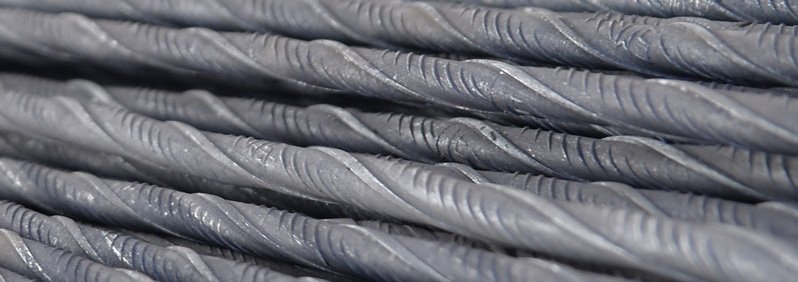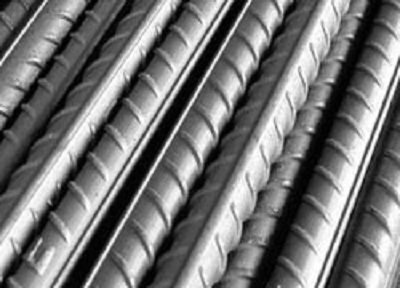Concrete is a construction material that is sufficiently strong in compression, but weak in tension. Hence, concrete is reinforced with steel, because it has good tensile strength and bond between steel and concrete is also good.
The steel bars that are incorporated/reinforced in concrete to impart tensile strength into concrete are known as steel rebars. Rebar is reinforcing bar. Steel bars are used as rebars because elongation of steel due to high temperatures (thermal expansion coefficient) nearly equals to that of concrete.
Types of Steel Rebars:
There are two types of steel bars available in the market:
- Plain Steel bars – Mild steel and Medium tensile steel bars
- Deformed bars (Irregular Surface) – High Strength Deformed (HSD) bars
01. Plain Steel Bars:
It Should conform to IS 432 Part I specifications in India. These steel rebars are plain in surface and round sections. Easy to cut and bend.

Mild Steel Bar Grades (as per IS: 432, part – I – 1982)
Mild Steel Bars | Medium Tensile Steel Bars |
| Grades | |
|
|
02. Deformed Steel Bars:
Should conform to IS 1786 specifications. These are HYSD (High Yield Strength Deformed bars) bars having lugs, ribs or deformation on their surface, reducing slippage in concrete and increasing the bonding between concrete and steel. Deformed Steel bars have better properties than plain steel bars.
Ribbed or Tor Steel Bars | TMT Bars |
| About | |
|
|

Courtesy – Sikandersteels

Courtesy – Alaknanda
Popular Grades of High Strength Steel Bars worldwide both Tor and TMT are listed below:
Popular Grades | |||
| American Standard (ASTM A 615) | Euro Standard (DIN 488) | British Standard BS4449: 1997 | Indian Standard (IS: 1786) |
| Grade 75 (520) | BST 500 S | GR 460 A | Grade Fe – 415, Fe – 500, Fe – 500D |
| Grade 80 (550) | BST 500 M | GR 460 B | Grade Fe – 550 |
In Fe – 500D, D stands for Ductility. These bars are more ductile than Fe – 500.
Size of Steel Rebars:
Rebars are supplied in U-bent or straight rods of 40ft in length.
| Size | Weight per Bundle | Rods per Bundle |
| 8 mm 1 Bundle | 47.41 kg | 10 |
| 10 mm 1 Bundle | 51.85 kg | 7 |
| 12 mm 1 Bundle | 53.33 kg | 5 |
| 16 mm 1 Bundle | 56.89 kg | 3 |
| 20 mm 1 Bundle | 59.26 kg | 2 |
| 25 mm 1 Bundle | 46.30 kg | 1 |
| 32 mm 1 Bundle | 75.85 kg | 1 |
- Weight Tolerance: As per IS: 1786-2008
| 8mm to 10mm | ± 7% |
| 12mm to 16mm | ± 5% |
| 20mm | ± 3% |
For E.g: 8mm bundle may vary from 44.09 to 50.73 kgs and still be safe
- Standard rod length: 12 meters (40 ft)
- Weight of 1 rod = {(Dia x Dia)/162} x 12 (in kg)
Dia = Diameter in mm
Most commonly used rebar these days is TMT bar. TMT process changes the structure of material to a composite structure with tough surface rim and soft (ductile here) core providing an optimum combination of high strength, ductility and bendability.
TMT saves steel consumption as well as cost. If a structure has 1000 tons of M.S reinforcement than using TMT bars reduces the steel consumption to 400 tons saving 600 tons of steel with no compromise in the strength of structure. Reduction in steel reduces the considerable cost of structure.
Also Read:
Different Types of Cement and Their Purposes
Why Aggregate has an Important Role in Concrete
Author Bio
Nidhi Patel – Civil Engineer
